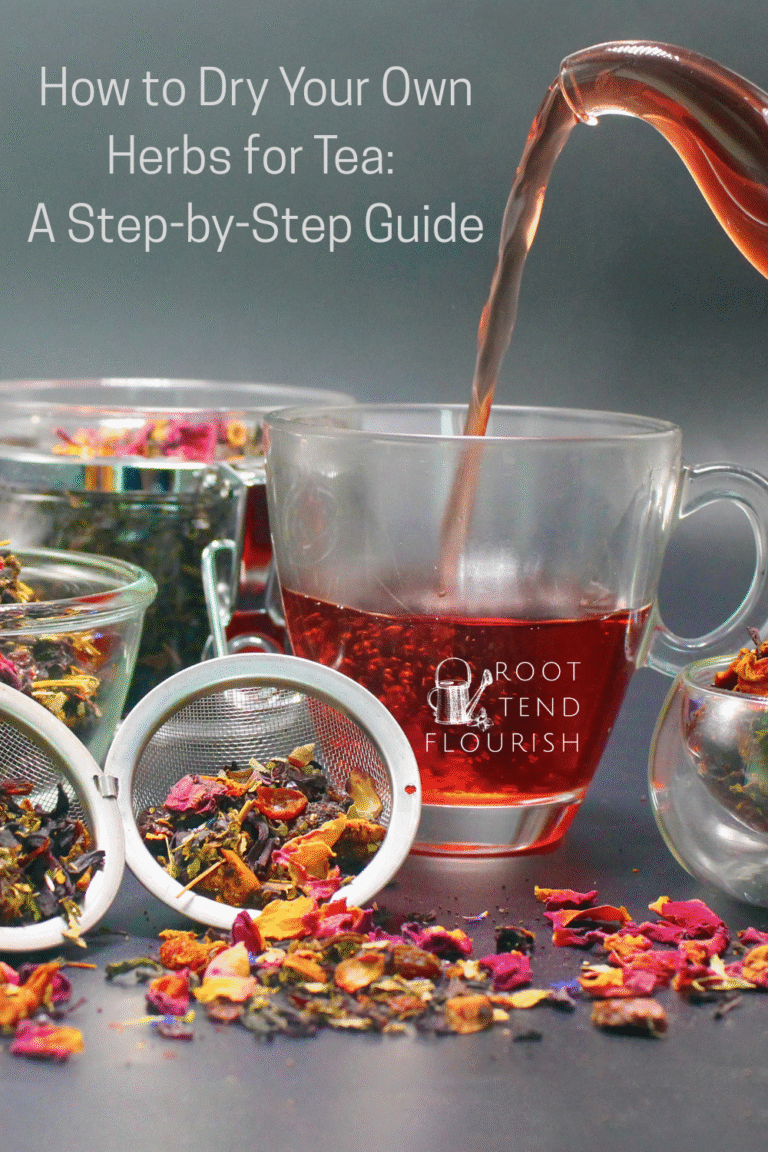Part 4: What You Need for Basic Gardening Supplies
How to Plan a Garden for Beginners Part 4
So far in this series, we covered Questions to consider when planning a garden for beginners, Siting the Garden and Selecting Your Plants. Which means that you are ready to plant…Well, almost. All great gardeners need some basic gardening supplies to get started.
Gardening can get expensive quickly but to start growing some simple plants you only need a few basic supplies. Some of these can even be sourced second hand if that’s better for your budget. Basic supplies include:
- Plants starts or seeds
- Soil and compost
- Containers or a raised bed (if needed)
- Watering supplies and Plant Supports
- A few tools
Let’s dive a bit deeper into each of these supplies.
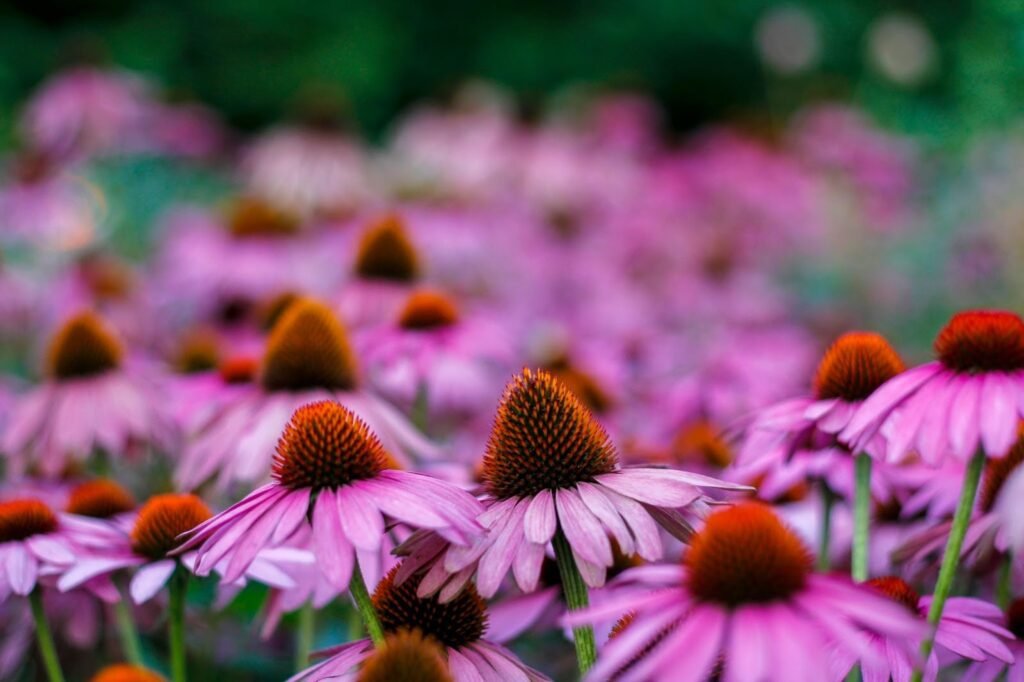
This post may contain affiliate links. Please read our disclosure policy.
Gardening Supplies: Plants
Seeds or Transplants
When you gather gardening supplies pay attention to choosing healthy plants. Consider whether you’re going to plant from seed or plant starts, particularly for edibles. You can find seeds for most plants and you’ll save money over time this way.
If you’re starting seeds, note that some plants need to be started indoors ahead of time. If you have a shorter growing season this would include tomatoes, peppers, cucumbers for example. Others seeds, like carrots, lettuce and green beans, can be directly sown into the soil.
Consider the time, money and space you have available for starting seeds indoors. You can find many plants already started at a local garden center but they will cost significantly more than seeds. Most often, you’ll find perennials at a garden center as they’re more complicated to start from seeds. Prices and sizes vary so it’s helpful to visit a few local places to see what your options are. Most perennials grow pretty quickly. Starting with a smaller size plant can save you money in the long run if you’re patient.
Quantity
For example, if you want to grow cherry tomatoes and you plan to stake them so they grow upright, they each require about 18-24” between plants. If you have a strip of growing space six feet long you can fit three to four cherry tomato plants. That same space could fit 2 rows of carrots from seed spaced 12 inches apart.
Your growing space and the mature size of the plants you want to grow will dictate how many plant starts of seeds you need to buy. For example, a cherry tomato plant takes up more space than a spinach plant. Make a general plan of where you want to grow specific plants. Next see how much space each of those plants will require. Then base your shopping list off of that.
Spacing
Proper spacing is especially important with perennials because you won’t be replanting them each year. They will stay put and continue to grow larger each season right where they are.
For example, an echinacea flower can take up 2 feet of horizontal space over time. So a six-foot area could be planted with 3 echinacea plants. Read and save your plant tags as they will give you critical information on plant spacing. Most people over plant and over buy so save yourself time and money by doing this planning ahead of time.
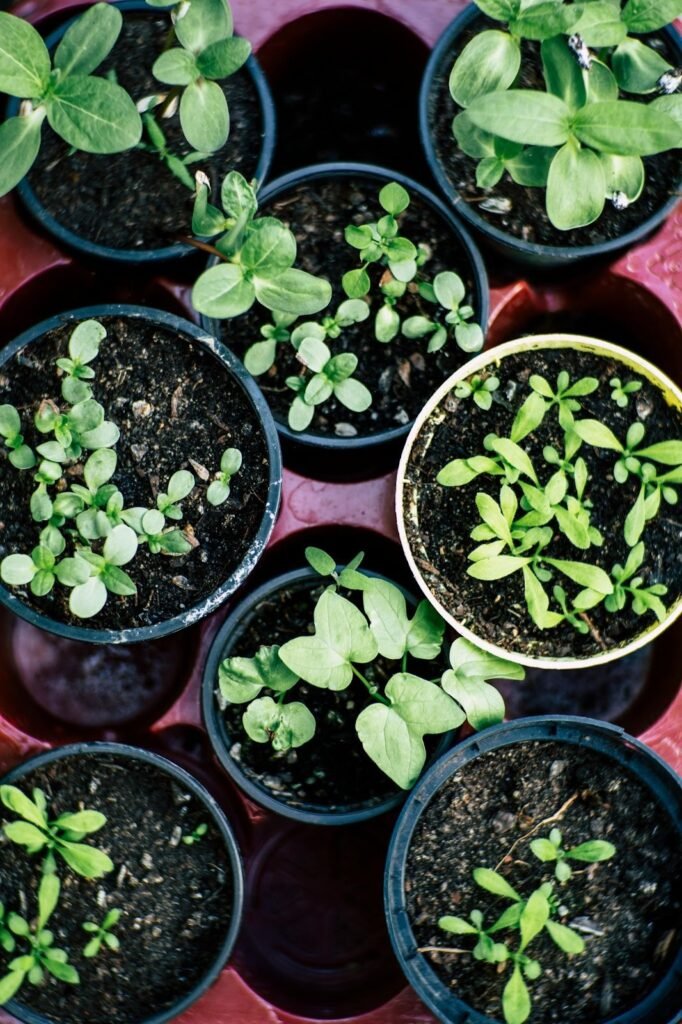
Containers or Raised Beds
Now think through another key gardening supply: what you’re growing your plants in. Do you need containers or materials to build raised beds? For raised beds, there are some great kits out there or simple DIY options. If you’re growing in containers, you can get very creative with what you grow in. There are plenty of beautiful garden pots of all sizes but they can add up quickly.
For more frugal options, consider five-gallon buckets, fabric grow bags, window boxes, or hanging baskets. Old sap buckets or even hollowed out stumps can work. Thrift stores, neighborhood groups and Facebook Marketplace can be a great place to score these items.
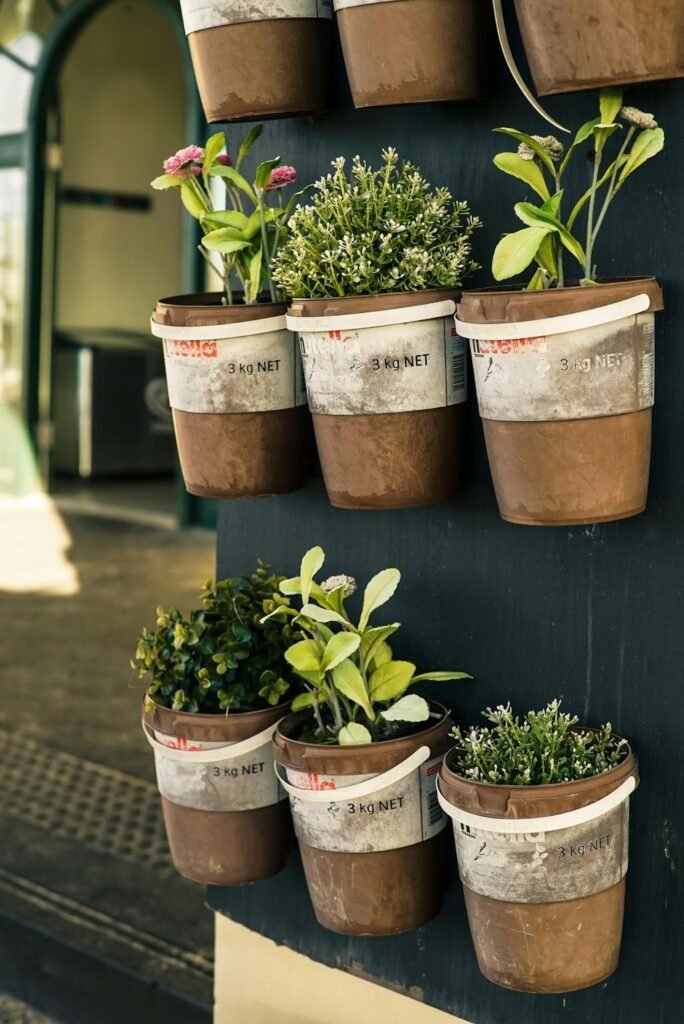
Gardening Supplies: Soil and Compost
Once you know where you’re growing your garden, consider your growing medium. Do you need soil or compost for the raised beds or containers? If you’re planting directly in the ground, does the space need compost or other nutrients based off of a soil test? For small growing spaces, bagged soil and compost are often the best option. They are usually readily available in most garden centers.
For larger spaces, you can call around to local garden centers to see if they deliver bulk quantities of compost or garden soil. Usually, it’s sold by the cubic yard, which can be more cost effective. Typically, it can be dumped onto a tarp on your driveway or yard.
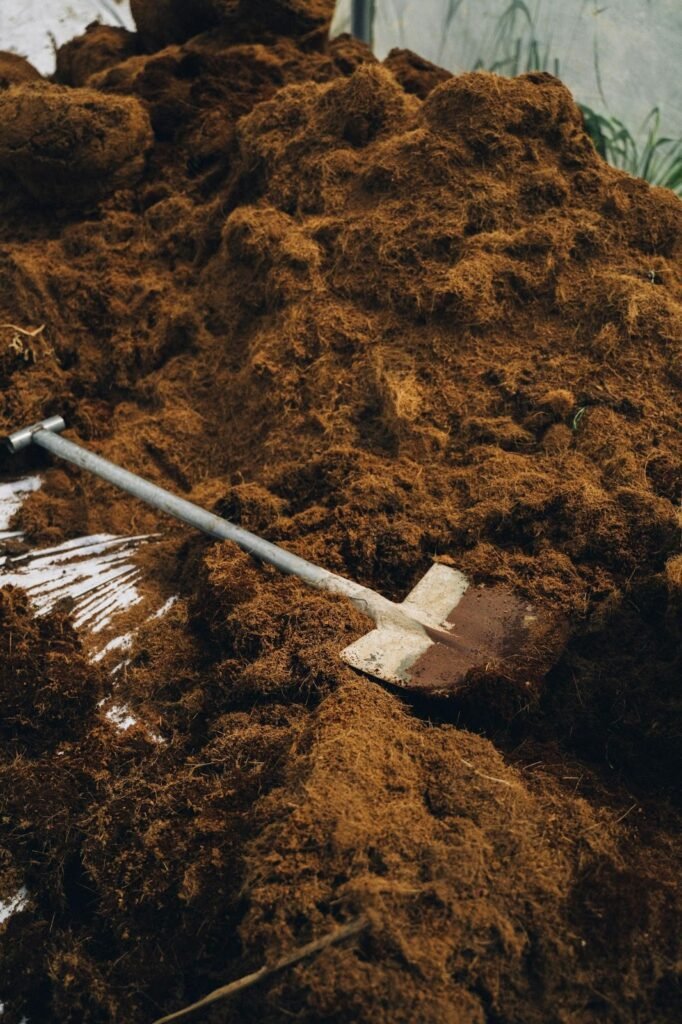
Watering Supplies and Plant Supports
Watering Supplies
Consider what you need to be able to water your garden and support your plants. A good hose with a gentle nozzle and a big watering can will be a good start to your gardening supplies. If you have a larger garden and money allows for them, adding a sprinkler and timer can save you a lot of effort. These also will benefit the plants with a deeper watering.
Some timers are just a simple dial you set for a period of time and they turn the water off when the cycle is complete. Programmable timers allow you to set them ahead of time to come on certain days and times of the week for a set duration of watering. Those can be particularly helpful if you’re going to be out of town during the heat of summer. Simple irrigation lines can also be a lifesaver but aren’t necessary or could be added over time.
Staking
Many edibles will require or benefit from some staking, such as tomatoes, cucumbers, snap peas, and green beans. Staking vining plants keeps them off the ground where pests are more likely to live. It also allows for good airflow which helps prevent disease. Even some perennials and fruiting vines do better with a little support, such as peonies, climbing roses and grapes.
There are many types of gardening supplies that can be used for this. Simple bamboo, wood stakes, or teepees made from sticks and twine can work. Tomato cages or fancier growing supports such as trellises or towers can also work. These aren’t needed immediately but as your plants grow, you’ll want to have a way to support them.
Again, don’t be afraid to get creative what what materials you use to make your plant supports. You can source sturdy sticks for free from nearby woods. Perhaps you have a stash of snow stakes that would work great for tomatoes. One year, I used scrap wood and leftover chicken wire to make some cucumber trellises. It only cost me about an hour of my time and they were reusable year to year. Sourcing these things second hand is another great way to save money.
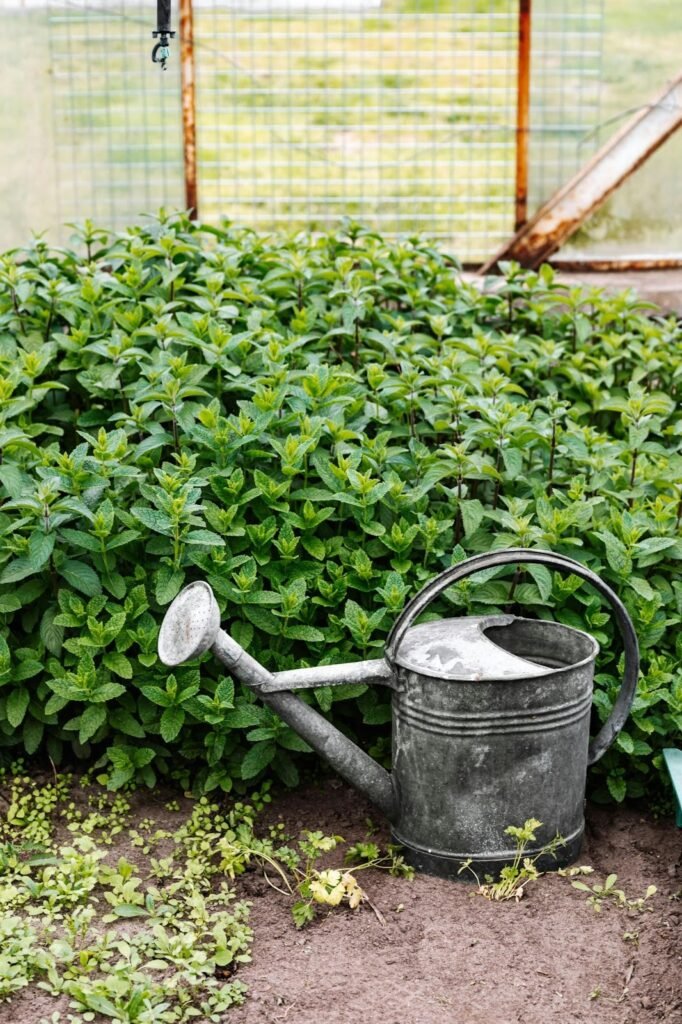
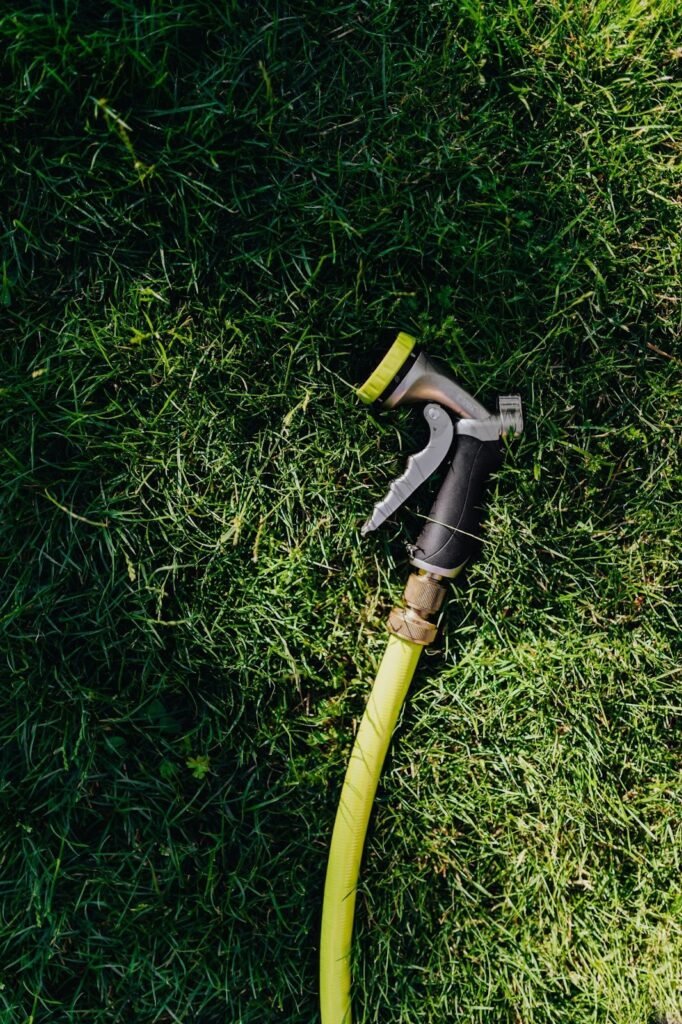
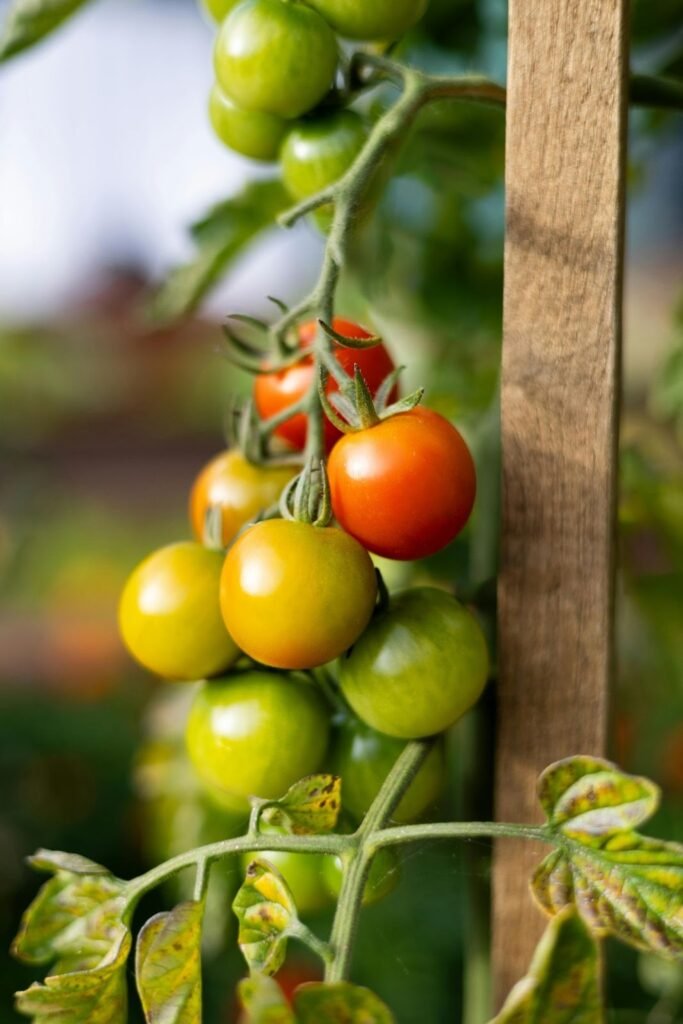
Gardening Supplies: Choose Your Basic Tools
Hand Tools
There’s a massive variety of gardening supplies out there. But to get started as a beginner gardener you really only need a few basic tools. For planting seeds, small plant starts and hand weeding, a trowel, small cultivator, weeding knife and hand held pruners are very useful.
If you’re just staring out, you can often find these basic tools sold as a set which can be more cost effective. If money allows for it, I find the Japanese Weeding Sickle to be something I grab for often. I also always have my Felco hand pruners. They’re pricey but worth it as they last for years and cut through nearly anything if kept sharp. You’ll also want a large container of some sort to put weeds and other debris into. My favorite is this tub trug but I also use old five-gallon buckets just as often.
Larger Tools
For working larger areas of soil and planting bigger plants, there are some other tools that are good to add to your inventory. A good garden shovel (I prefer one with a long handle for more leverage) moves soil easily. A square spade lets you cut through the soil and roots of plants easily when transplanting or dividing them. A sturdy leaf rake clears debris and smooths out soil. A steel rake levels out soil and mixes in compost. If money allows for it, I would also add in a pitchfork for moving soil or compost and breaking up soil and a wheelbarrow or garden cart.
When you have a lot of plants, soil or debris to move, a wheelbarrow can save you a lot of time and effort. I also use them to move heavy objects from one place to another, such as garden pots, bagged compost, or even to get my tools to the garden if it’s far from my garage. Many of these tools can easily be found second hand with a little bit of time and patience spent looking.
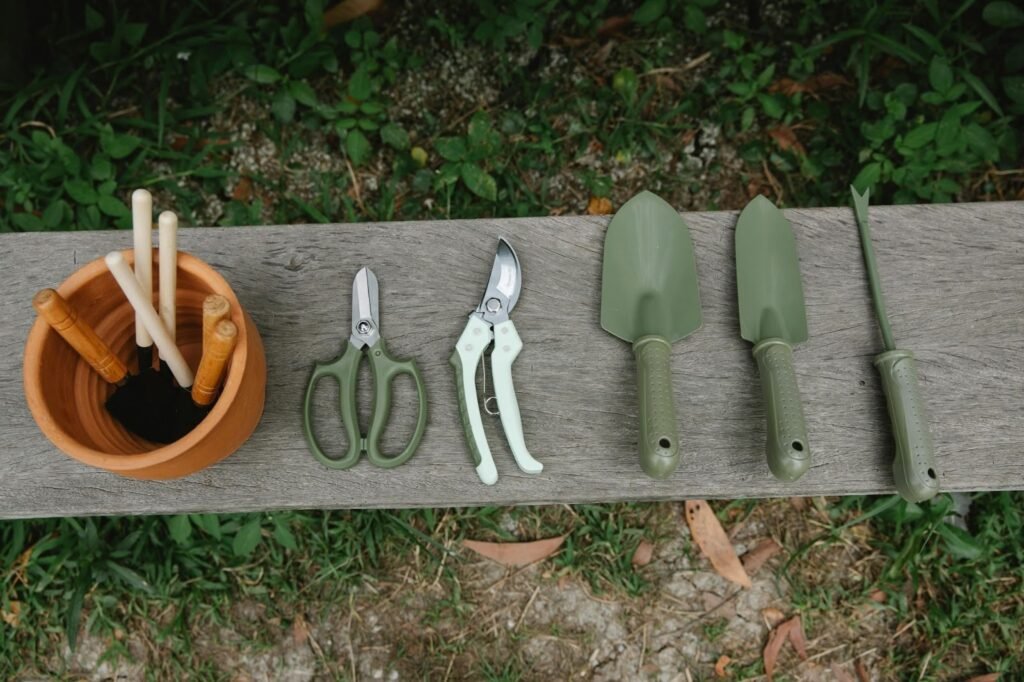
Wrapping Up
Now that you’ve gathered all your gardening supplies, including plants, soil, containers, watering supplies, plant supports and some basic tools, you’re ready to put the shovel in the soil and get planting. If you follow through with these four parts of planning a garden for beginners, you’ll be off to a great start. We’ve talked about a lot of things in this four-part series including:
- Part 1: What Questions to Consider When Planning (Part 1)
- Part 2: Where to Site Your Garden (Part 2)
- Part 3: How to Select Your Plants (Part 3)
- Part 4: What Supplies You’ll Need (Part 4)
There’ll likely be some bumps along the way and some mishaps but that’s all part of the process of being a gardener. We can plant the right plant in the right place with the right preparation but at the end of the day, we don’t have full control over how quickly and how well that plant grows.
That’s part of the nature of being out in the garden- there’s always lessons to be learned but also surprises to be had. You could walk out one day to find your zucchini covered in squash bugs but the lettuce nearby is growing like mad and begging to be made into a salad. There’s only one way to get to experience the magic of the garden and that’s to jump in and get started. Now go get those hands dirty!

